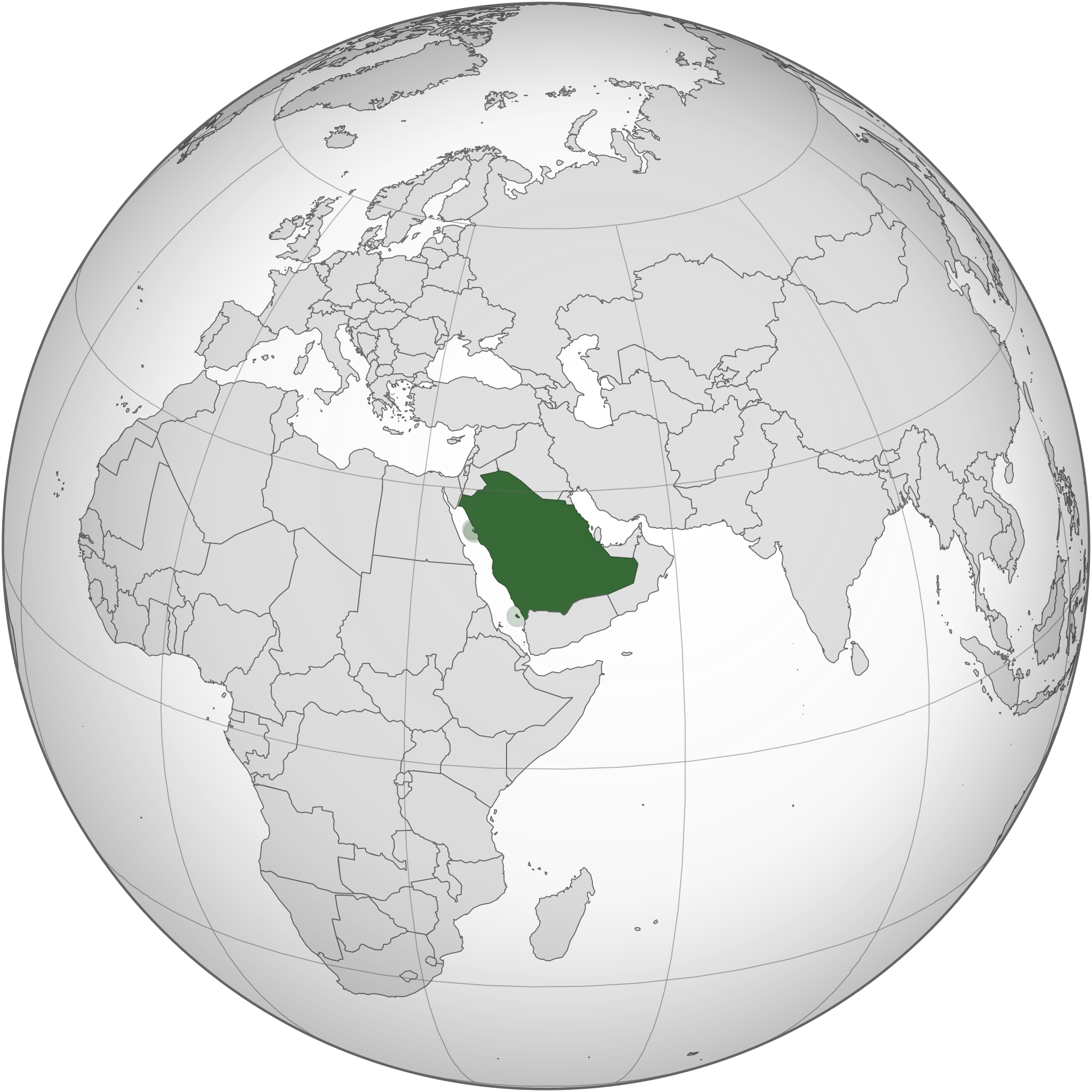More languages
More actions
| Kingdom of Saudi Arabia ٱلْمَمْلَكَة ٱلْعَرَبِيَّة ٱلسُّعُوْدِيَّة | |
|---|---|
 | |
| Capital and largest city | Riyadh |
| Official languages | Arabic |
| Religion | Islam |
| Dominant mode of production | Capitalism |
| Government | Absolute monarchy |
• King | Salman bin Abdulaziz |
• Crown Prince | Mohammed bin Salman |
| Area | |
• Total | 2,149,690 km² |
| Population | |
• 2022 census | 32,175,224 |
Saudi Arabia, officially the Kingdom of Saudi Arabia, is a US-backed absolute monarchy in Western Asia. In its war against Yemen, it has killed or injured over 18,000 civilians.[1]
History[edit | edit source]
First Saudi State[edit | edit source]
The Saudi dynasty began in the 18th century because its founder made a pact with Muhammad ibn Abd al-Wahhab.[2]
Post-unification[edit | edit source]
In 1933, Saudi Arabia signed concessions to US and British oil companies.[2]
Franklin Roosevelt made an alliance with Saudi Arabia. After Nazi Germany surrendered in 1945, the USA continued building a military base in Dhahran.[3]
Crown Prince Faisal attended the 1955 Bandung Conference. Despite his opposition to Nasser, Egypt defended Saudi Arabia against a British invasion from Oman, and Saudi Arabia lent money to Egypt during the Suez Crisis.[2]
Free Princes[edit | edit source]
Talal bin Abdulaziz, the leader of the Free Princes and a follower of Nasser, proposed creating a National Council in 1958. Faisal and Saud both rejected his proposed constitution. In 1961, Talal used secular public works to decrease unemployment.
In 1962, Faisal took over from his brother Saud and rejected Talal's labor law, leading many of the Free Princes to flee to Lebanon. Soon after, Faisal created the World Muslim League.[2]
1979 uprisings[edit | edit source]
In 1979, a group of devout Muslims sieged Masjid al-Haram, seeking to take back the mosque from corrupt princes. At the same time, Shia Muslims in eastern Saudi Arabia rebelled. The National Guard crushed both uprisings.[2]
Workers' movement[edit | edit source]
In 1953, the workers of Aramco tried to strike to form a union. They protested against King Saud and demanded the end of U.S. occupation. The state killed officers from the Dhahran Air Base who mutinied in support of the workers.[2]
Women's rights[edit | edit source]
Male guardians control where women can travel and work in Saudi Arabia. Adultery and "witchcraft" are punishable by death by stoning or beheading.[4]
References[edit | edit source]
- ↑ "Five Years of Data on Saudi-led Air War" (2020-03-25). Yemen Data Project. Archived from the original on 2021-12-04. Retrieved 2022-01-16.
- ↑ 2.0 2.1 2.2 2.3 2.4 2.5 Vijay Prashad (2008). The Darker Nations: A People's History of the Third World: 'Mecca' (pp. 260–9). [PDF] The New Press. ISBN 9781595583420 [LG]
- ↑ David Vine (2020). The United States of War: 'Empire of Bases' (pp. 260–1). Oakland: University of California Press. ISBN 9780520972070 [LG]
- ↑ "Hypocrisy of U.S. government, corporate media on display in reaction to Iran protests" (2022-09-26). Liberation News. Retrieved 2022-09-26.


